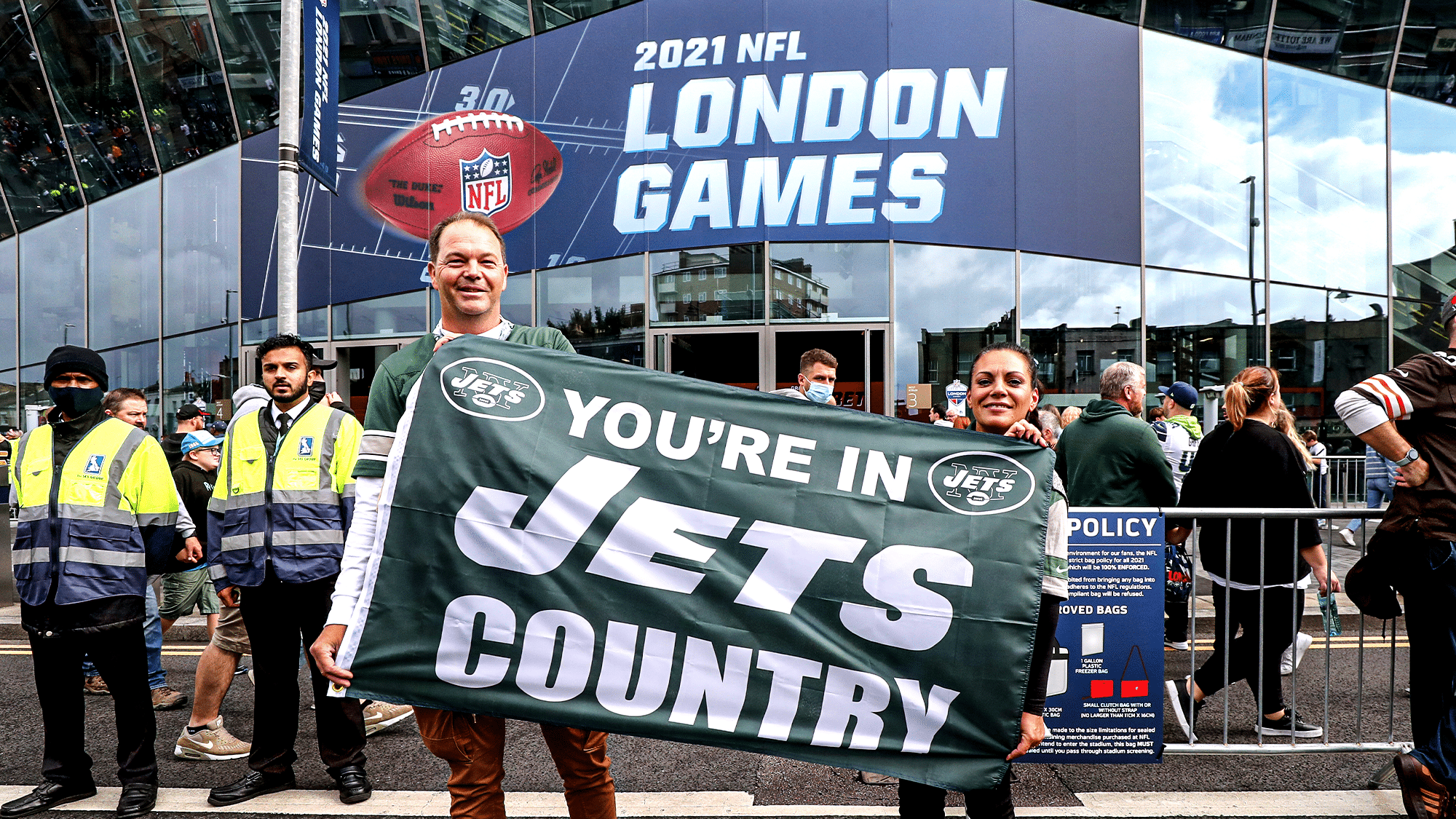How well did Zach Wilson perform against the Denver Broncos beyond the box score?
Throughout the 2021 season, I will be running a weekly series of breakdowns in which I analyze Zach Wilson‘s performance by grading every single one of his plays on a 0-to-10 scale.
My goal with this grading system is to capture the true quality of Wilson’s performance. Box score statistics can be misleading, as they do not account for a variety of factors that determine whether a quarterback performed well or poorly on a given play.
After re-watching each play on the All-22 film, I grade them on a 0-to-10 scale and then take the average of all plays to form a 0-to-100 overall score with 50 being approximately league-average (based on my studying of numerous other quarterback performances across the league).
Here are just a handful of the primary factors that are taken into account in the grading of each play, and a basic description of what I’m looking for:
- Decision-making (Did the QB choose the best available option or did he leave a better play on the field?)
- Throw difficulty (Clean pocket or pressured? Wide open or tight window? Stationary or on the move? More difficult throws are more valuable.)
- Accuracy/placement (Even if the pass is completed, was the ball placed in the best possible spot or did the receiver have to make an extra effort to catch it?)
- Game situation – score, time, field position, down and distance (Good decisions based on the clock/situation are crucial. Playing the sticks is also important – it is not a good play to throw a 5-yard out on third-and-10 while a 15-yard dig is open, but a 5-yard out on third-and-2 is good.)
Ultimately, it’s all about context. Not all 40-yard completions are created equal. Not all interceptions are created equal. You need to watch a play to understand whether the quarterback did a good or bad job. The raw result of a play cannot give you that answer.
When we analyze every play on film multiple times and grade the quarterback’s individual effort independent of his surroundings or the on-paper outcome of the play, we get a much better estimation of how well he actually played.
Of course, keep in mind that these grades are subjective. They are but one man’s opinion and are not gospel. Feel free to let me know your takes on my grades for Wilson’s performances.
Let’s dig into everything that went into my 0-to-100 grade for Wilson’s cross-country trip to Colorado.
Glossary
For each performance, I include a few metrics that help explain how Wilson arrived at his final grade.
These are some of the metrics I will break down for every Wilson outing.
Overall grade: 0-to-100 grade based on the average score of all plays analyzed. An estimation of individual performance quality.
Positive plays: Number of plays graded above 5.0: above-average efforts.
Negative plays: Number of plays graded below 5.0: below-average efforts.
Neutral plays: Number of plays graded as a 5.0: plays that are not noticeably good or bad. These are typically lost plays or plays in which the QB can hardly be evaluated: screens, batted passes, miscommunications, and unavoidable sacks are commonly graded as a 5.0.
Positive/negative ratio: Ratio of positive plays to negative plays. Defines the quarterback’s consistency level.
Average positive score: The average score of all positive plays. An indicator of how high the quarterback’s peaks were — a higher score indicates his best plays were typically highlight-reel-worthy while a lower score indicates that his best plays got the job done, but were typically unspectacular.
Average negative score: The average score of all negative plays. An indicator of how low the quarterback’s valleys were — a higher score indicates his mistakes were typically minor while a lower score indicates that his mistakes were typically brutal.
Wow Factor: Combination of average positive and average negative. An indicator of the combined ability to avoid big mistakes and produce jaw-dropping moments.
7+ plays: Number of plays graded 7.0 or better: elite moments.
≤3 plays: Number of plays graded 3.0 or worse: brutal moments.
Zach Wilson vs. Denver Broncos
- Actual stats: 19/35 for 160 yards, 0 TD, 2 INT (4.6 Y/A, 42.6 QB rating). 5 sacks for 41 yards. 1 rush for 2 yards.
- Overall grade: 46.4 – (Average: 50, Great: 60+, Elite: 70+, Poor: <40, Bad: <30)
- Plays graded: 41
- Neutral plays: 8
- Positive plays: 21 (51.2%) – (Average: 50%, Phenomenal: >60%, Poor: <40%)
- Negative plays: 12 (29.3%) – (Average: 30%, Phenomenal: <20%, Poor: >40%)
- Positive-negative ratio: 1.75 – (Average: 1.70, Phenomenal: 3.00+, Poor: <1.00)
- Average positive: 5.76 – (Average: 5.90, Phenomenal: 6.00+, Poor: <5.80)
- Average negative: 3.71 – (Average: 3.80, Phenomenal: 4.00+, Poor: <3.60)
- Wow factor: 9.47 – (Average: 9.70, Phenomenal: 10.00+, Poor: <9.40)
- 7+ plays: 1 (2.4%) – (Average: 8%, Phenomenal: >12%, Poor: <4%)
- ≤3 plays: 3 (7.3%) – (Average: 8%, Phenomenal: <4%, Poor: >12%)
I scored Wilson with a 46.4 overall grade out of 100 for his performance in Denver. That slides it in between his opener against the Panthers (51.1) and his Week 2 debacle against the Patriots (22.6).
Upon rewatching the film, Wilson did not look as bad to me as I thought he was when watching the broadcast. This is mainly because there wasn’t anything Wilson could do to prevent many of the team’s unproductive and ugly plays. Factors beyond his control were often to blame for the offense’s struggles.
Wilson also made some good plays that were tough to remember since some of them were either dropped or were not extremely memorable since they did not result in huge yardage.
With that being said, Wilson still struggled and left a lot of plays on the field.
Self-inflicted pressure: Dumping the ball off too early
Wilson’s worst trait in this game was his tendency to play as if he was under pressure when he really wasn’t. He showed a lot of bad habits that have seemingly developed as a result of the constant pressure he has been facing. His timing, pocket presence, and sense of the pressure are all out of whack right now.
There were three consequences of the self-inflicted pressure Wilson placed upon himself: dumping the ball off too early, hesitating to get the ball out, and throwing with poor mechanics.
Let’s start with Wilson’s early dump-offs.
Oftentimes, Wilson would rush the ball out to an underneath passing option despite having plenty of time to hang tight in the pocket and continue scanning the field. This led to him failing to get the ball to open receivers down the field a few times.
Elijah Moore was the most frequent culprit of these safe-minded decisions by Wilson. I counted three plays in which Moore was open for a first down and Wilson checked the ball down to a more shallow target despite having enough time to keep reading the field and hit Moore.
Exemplifying his newfound conservatism, Wilson’s average pass attempt traveled only 7.8 yards downfield, which was a season-low and ranked 18th out of 32 quarterbacks in Week 3.
This is not a bad place for Wilson to be in the rankings at all, but in this game, the ranking was largely due to his overly safe decision-making. There were good downfield windows that he should have been taking.
The healthy way for Wilson to decrease his average target depth would be for the Jets to start drawing up more designed, easy throws for him. Right now, they’re calling way too many five-step-drop, long-developing concepts for him.
Self-inflicted pressure: Hesitancy
Another bad aspect of Wilson’s pocket presence was his hesitancy. There were instances where Wilson hesitated to make a throw because he seemed to be anticipating that he wouldn’t have time to make it, whereas he actually did in that scenario.
On one sack late in the first half as the Jets were attempting to mount a one-minute drive, Wilson had Corey Davis wide open on an out route for a first down and stared at him from the snap. Wilson started winding up but pulled the ball down and scrambled despite not being under pressure. He ran into a six-yard sack that killed the drive.
On Wilson’s first interception of the second half, Davis had the pre and post-snap leverage to open up on another out route, and Wilson was ready to hit him, but Wilson hesitated to release the ball, stopping his windup once before getting into it again and throwing. His late release and telegraphed throw allowed the Cover-2 safety to read his eyes, break downhill, and undercut the throw.
Clearly, these things are happening because Wilson’s mental clock is damaged due to the quick pressure he has been taking. You can just see him second-guessing, “Do I actually have time to get this thing out?”, and that’s not good.
Self-inflicted pressure: Accuracy
Finally, Wilson missed a handful of fairly easy throws due to poor mechanics from clean pockets. He often would throw with awkward mechanics as if he were attempting to avoid pressure despite actually having room to set himself and deliver the ball with normal mechanics.
A third-down miss to Elijah Moore on the Jets’ opening drive, a miss to Ty Johnson on an angle route on the final drive of the first half, and an easy dump-off to Johnson in the fourth quarter highlight Wilson’s whiffs where he tried to get fancy despite not needing to.
Wilson has to start feeling more confident in the pocket. The Jets’ offensive line is playing poorly, yes, but they aren’t collapsing on every play or even close to it. Plays are there to be made, and sometimes, Wilson isn’t making them because he is anticipating that he won’t have ample time or space even though he does.
When things break down, his instincts will take over naturally, and he has to trust that. He cannot be fixated on the possibility of incoming pressure and must remain focused on fluidly and confidently going through his reads, delivering the ball on time, and throwing with good fundamentals.
Of course, all of these things can only come with time for a 22-year-old rookie quarterback. Making these mistakes will only help him identify what his weaknesses are and how he can improve them.
From the Jets’ perspective, they need to do whatever it takes to patch up the issues around Wilson to prevent his bad habits from festering. The level of support he has received is far from what the franchise envisioned when it invested so many resources into the offense throughout the offseason.
Wilson did as much as he could throughout a decent chunk of the game
That was a lot of negativity to kick off this breakdown. Let’s get into why I thought Wilson was not as bad in this game as he may have appeared initially.
First of all, Wilson was off the hook for many of the Jets’ plays due to how bad things were around him.
Mike LaFleur was out-coached in this game. His passing concepts were ineffective and regularly left Wilson with no good options down the field. Additionally, the route-running of everyone not named Elijah Moore was bad.
Wilson was fairly consistent at identifying his best available option and hitting it, even if that option was usually no more than 10 yards down the field.
This was especially true in the first half. Wilson was surprisingly solid for most of the first two quarters. I had him with a 65.4 grade through his first 17 plays of the first half, earning only two negative grades. His accuracy on a simple diet of throws was good and his decision-making amidst a messy offense that gave him few options was consistent. New York’s first-half woes were the fault of others – Wilson did his job decently.
Wilson began collapsing near the end of the first half. As the Jets tried to mount a drive to close the second quarter, he inexplicably failed to hit an open Corey Davis and got sacked before missing a wide-open Ty Johnson on an angle route.
Those plays marked the beginning of Wilson’s woes with fear in the pocket, as the Davis play with 46 seconds left in the third quarter began a stretch in which I scored Wilson with a 32.5 grade over his final 24 plays of the game. Of Wilson’s 12 negatively-graded plays, seven came in the third quarter or in the final minute of the second quarter.
Drops hurt Wilson’s numbers
Wilson was victimized by quite a few drops. Pro Football Focus credited the Jets’ receivers with four drops while some other contested catches were not pulled in.
The big one was a bomb from Wilson to Corey Davis about midway through the second quarter. Wilson evaded pressure, scrambled left, and launched the ball downfield to the only viable target available. He put the ball right on Davis’ face but Davis allowed rookie cornerback Patrick Surtain to knock it from his grasp.
Late in the fourth quarter, Wilson stepped up from immediate pressure allowed by Greg Van Roten and threw across his body to hit Braxton Berrios for what should have been a first down. Berrios dropped it and the pass was intercepted. The ball was a little high, but it sailed straight through Berrios’ hands.
Running backs Michael Carter and Ty Johnson each dropped a perfectly accurate pass from Wilson that would have been a first down.
This wasn’t a drop, but Wilson had a great throw to Tyler Kroft early in the second quarter that I graded much better than an 8-yard catch would typically get. Kroft was the only plausible option on the field to move the chains on third-and-4 – and he was tightly covered, too. Wilson gave him a great ball away from the defender and Kroft laid out to grab it. It was a great read and great placement in a key situation.
Wilson had a few other throws like the Kroft play where he did not get many yards on the stat sheet but I graded him relatively strongly thanks to his anticipation, accuracy, and good field vision process by choosing the best option amongst a poor array of choices.
Overall grade: 46.4
Wilson left a lot of plays on the field due to issues that all seemed to stem from a fear of possible pressure when it wasn’t really there. This is something he has to iron out going forward.
With that being said, I do not think Wilson was awful in this game.
The consistency of Wilson’s decision-making was actually decent. There often wasn’t much available for him and he did a respectable job of finding the lone feasible option or throwing the football away. Wilson also made some good throws that went overlooked due to drops or low statistical output.
Wilson has a good chance this week to put everything together for his first truly excellent game. While Elijah Moore will be out, Jamison Crowder and Denzel Mims are in, and the Titans have an exploitable defense that ranks 25th in points allowed per game (28.0).











